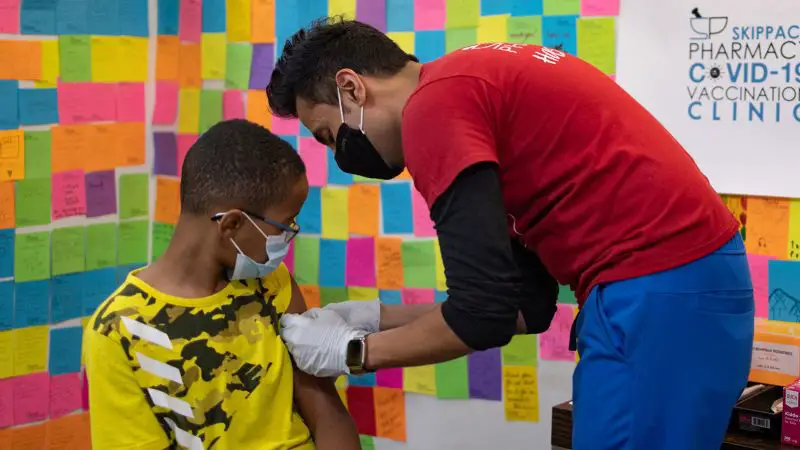
CNN
—
Higher Covid-19 vaccination rates among US children could prevent thousands of pediatric hospitalizations and millions of missed school days, according to an analysis published Tuesday by the Commonwealth Fund and the Yale School of Public Health.
If school-age children were vaccinated with the updated Covid-19 booster shot at the same rate that they were vaccinated against flu last season – between 50% and 60% coverage – at least 38,000 pediatric hospitalizations could be averted, including about 9,000 stays in intensive care units, through March. And if Covid-19 booster coverage reached 80% among school-age children by the end of the year, more than 50,000 hospitalizations could be averted.
Preventing Covid-19 hospitalizations could help ease the strain on pediatric hospitals, which have been especially full for the past few weeks as the respiratory virus season – including flu, RSV and Covid-19 – sweeps the country earlier than usual. Fewer than 1 in 4 pediatric hospital beds is available nationwide, including fewer than 10% of beds in seven states, according to data from the US Department of Health and Human Services.
“The overwhelmed health system means some families may not be able to get the care their child requires for a medical emergency,” Dr. Moira Szilagyi, president of the American Academy of Pediatrics, wrote in a CNN Opinion article, calling the situation a “crisis.”
Covid-19 transmission is significantly lower now than earlier in the year; less than 5% of the US population lives in a county considered to have a high Covid-19 community level, according to the US Centers for Disease Control and Prevention. But more than 2,400 children were admitted to the hospital with Covid-19 last week – nearly three times higher than the week before, CDC data shows.
The new analysis also found that higher vaccination rates could help keep kids in school, a benefit that other research has found could have important effects on mental health and academic achievement.
Assuming a five-day isolation period for children with mild illness and 10 days for those who are hospitalized or otherwise severely ill, bringing Covid-19 booster uptake in line with flu shots for children could prevent more than 22 million days of school absenteeism.
But the scenarios presented in the new analysis are quite unrealistic. So far, less than 5% of school-age children have their updated booster shot, according to CDC data.
A record number of updated Covid-19 boosters were administered in the first week of November, and US officials say they’re planning to push this week for people to get boosted against Covid-19 in order to offer maximum protection around Thanksgiving, but overall uptake remains low. To get to 50% coverage by the end of the year, the pace of vaccination would have to be at least 10 times faster than it’s been in November.
And Covid-19 vaccination rates among children have long lagged behind those for adults. Just 32% of children ages 5 to 11 and 61% of those ages 12 to 17 have competed their initial series of Covid-19 vaccination, compared with 78% of adults.
“Accelerated vaccination campaigns that achieve high coverage across all ages have the potential to prevent a possible imminent surge in Covid-19, protecting children both directly and indirectly and providing them with additional stability in terms of school attendance and other social engagement,” the study authors wrote. “The cost of inaction could be steep: millions more days of school absenteeism and thousands of preventable hospitalizations for children.”
Get CNN Health’s weekly newsletter
For this analysis, the researchers did not factor in the possibility of a new immune-evasive coronavirus variant but did account for both naturally acquired and vaccine-induced immunity that would wane over time.


Leave a Comment